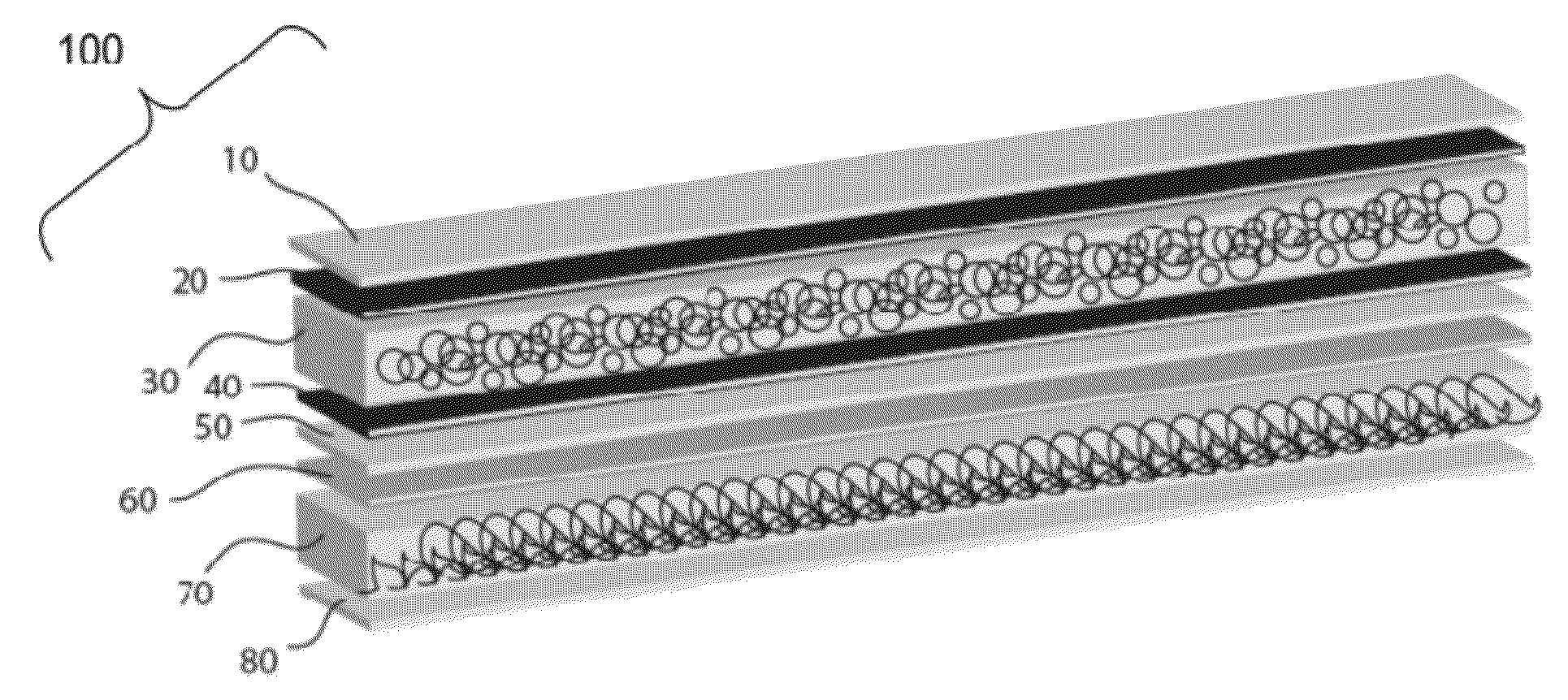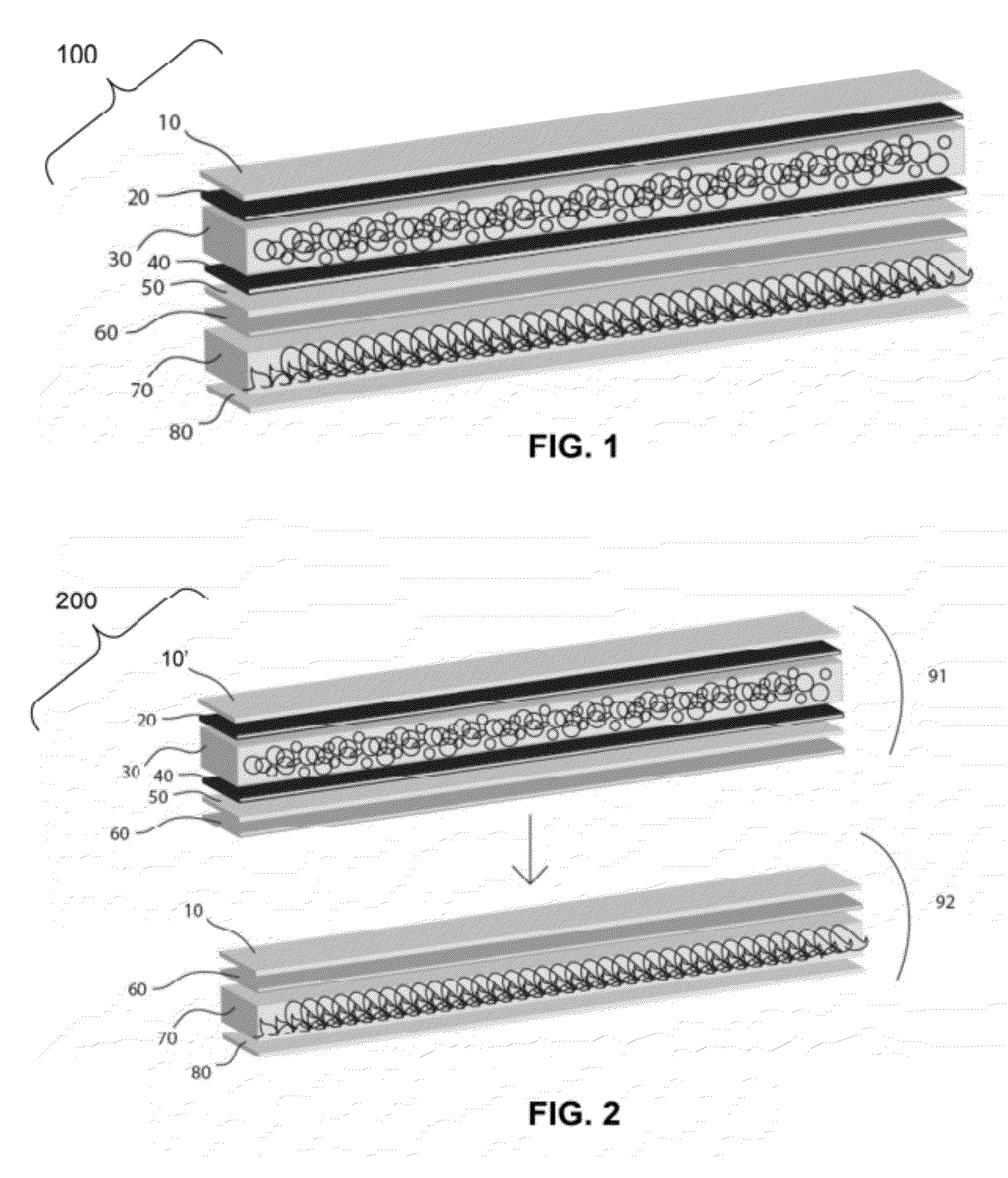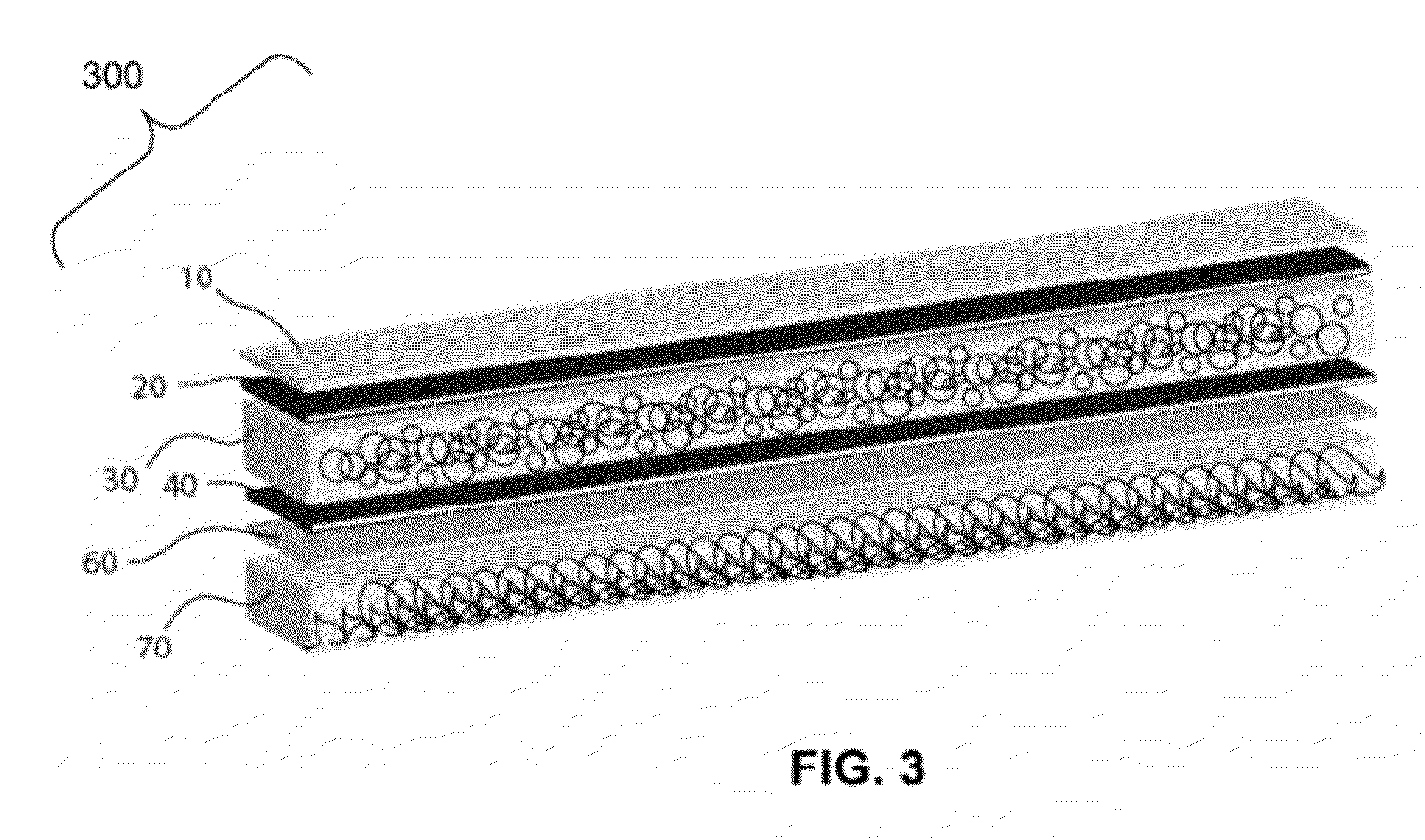Functional Composite Garment Materials
- Summary
- Abstract
- Description
- Claims
- Application Information
AI Technical Summary
Benefits of technology
Problems solved by technology
Method used
Image
Examples
example 1
[0250]An Example fabric 1700 made up of outer weather layer 1720 and reflective layer 1721, laminated together. The outer weather layer 1720 is composed of a durable nylon fabric 1701 treated for water repellency with a Teflon coating, laminated with a non-porous water-vapor-permeable monolithic membrane 1703. The reflective layer 1721 is a supporting fabric of knitted polypropylene 1702 coated with aluminum 1704 via a vapor deposition method such that the aluminum coating is very thin, between 10 nm and 200 nm and on one side of the knitted polypropylene, maintaining the original space between the fibers of 1702 and hence breathability. The aluminum coating 1704 is protected from oxidation by an acrylic coating with a super-hydrophobic finish. The reflective layer 1721 is laminated to the outer weather layer 1720 such that the metalized aluminum side of layer 1721 faces the membrane 1703.
example 2
[0251]Is the same as example 1 except the reflective layer 1721 is laminated to the outer weather layer 1720 with the metal side of 1721 facing away from the outer layer 1720.
example 3
[0252]Is the same as example 1 or 2 except the supporting fabric 1702 of the reflective layer is replaced with a double knit fabric with polypropylene hollow core yarn on the next to skin side with antimicrobial treatment and hydrophobic surface finish and the outside of the fabric is a wool yarn with hydrophilic properties.
PUM
| Property | Measurement | Unit |
|---|---|---|
| Metallic bond | aaaaa | aaaaa |
| Permeability | aaaaa | aaaaa |
| Hydrophilicity | aaaaa | aaaaa |
Abstract
Description
Claims
Application Information
 Login to View More
Login to View More - R&D
- Intellectual Property
- Life Sciences
- Materials
- Tech Scout
- Unparalleled Data Quality
- Higher Quality Content
- 60% Fewer Hallucinations
Browse by: Latest US Patents, China's latest patents, Technical Efficacy Thesaurus, Application Domain, Technology Topic, Popular Technical Reports.
© 2025 PatSnap. All rights reserved.Legal|Privacy policy|Modern Slavery Act Transparency Statement|Sitemap|About US| Contact US: help@patsnap.com



